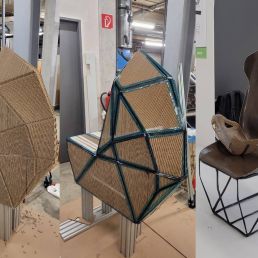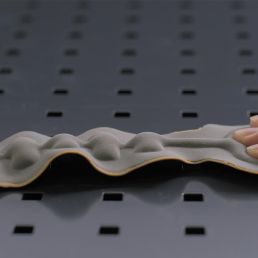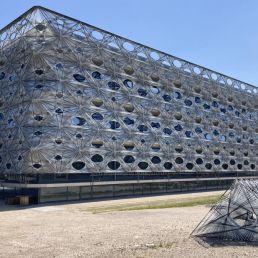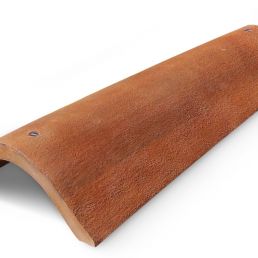Plastics between Multi-functionality and Lightweight Construction
Innovatives of the K international trade fair
form 236
January/February 2011
publisher
Birkhäuser (Basel)

The threat of supply bottlenecks for rare metals, oil and natural gas are at present one of the topics dominating the materials industry. And the exhibitors at K 2010 in Düsseldorf also primarily dedicated themselves to the issues of sparing resources and bio-based plastics. Multi-purpose materials are also on the up.
The special “Visions in Polymers” show at the K 2010 in Düsseldorf focused on the potential plastics offer to enhance energy efficiency. Innovative polymer solutions, for example, improve buildings’ heat insulation, are often a core component in lightweight aircraft structures or wind-power plants and are likewise used in foils for fuel cells or photovoltaic elements. Interesting solutions in these segments were presented, for instance, by Solvay, Bayer MaterialScience and Albis Plastic.
That it is imperative to minimize autos weight if electrically powered cars are to enter the market in a big way is clear. In response, Evonik Industries took the example of a Lotus racing car and showed how by using PMMA and high-strength polyamides in the chassis as a whole the total weight can be cut by 75 kilos. Moreover, lower energy consumption is achieved by using innovative oil additives; the ignition power is delivered by a Lithium ion battery that, thanks to new polymer compounds, is 65 percent lighter than traditional lead batteries.
In recent months, some manufacturers also have started expanding their ranges of biopolymers and natural fiber-reinforced plastics. For example, Fkur has developed new mixtures based on PLA and cellulose for injection molding and foils, intended primarily for applications in multilayer compounds and for deep-freeze packaging. Moreover, new cellulose ester compounds that suffer only minor heat distortion across temperatures up to 115 °C were on display that will drive the use of bioplastics in the electronics and household appliance sectors.
The outstanding examples of new functional materials on show at the fair included developments by the Fraunhofer-Institute UMSICHT in Oberhausen: Self-healing polymers, adhesion surfaces that resemble the adhesive organs of insects, self-sharpening cutting tools or minimal-abrasive structures that take their cue from the skin of a sand skink are all destined first and foremost to prevent machine or production plant downtime. Other applications remain to be explored.
www.solvey.de
www.albis.com
www.evonik.com
www.fkur.de
www.umsicht.fraunhofer.de
image source: Evonik
Ecoblaq molecular wood colours
23 March 2024
Ecoblaq is a molecule manipulation method, a natural chemical reaction, making…
Natural fiber reinforced car seat
22 October 2023
The focus of the project "Design for Recycling" is a seat shell that is made…
MotorSkins morphing textiles
19 April 2022
Berlin based start-up MotorSkins designs and produces textiles with embedded…
3D Pioneers Challenge 2022
15 December 2021
The 3D Pioneers Challenge 2022 adresses tech pioneers who pave the way for…
IGNIS – Light from waste heat energy
12 August 2020
The availability of affordable, independent and, above all, clean electrical…
Brake disc with reduced fine dust
21 April 2021
Fine dust endangers our health. One of the main sources is traffic, especially…
Texoversum
15 July 2023
With the "Texoversum", Reutlingen University has put into operation a training…
Invisible Terracotta Solar Rooftile
10 May 2023
The family-run business Dyaqua has developed a technology to integrate a…
Xarvio – Digital Farming
8 January 2021
BASF Digital Farming GmbH has received the renowned Crop Science Award for the…








